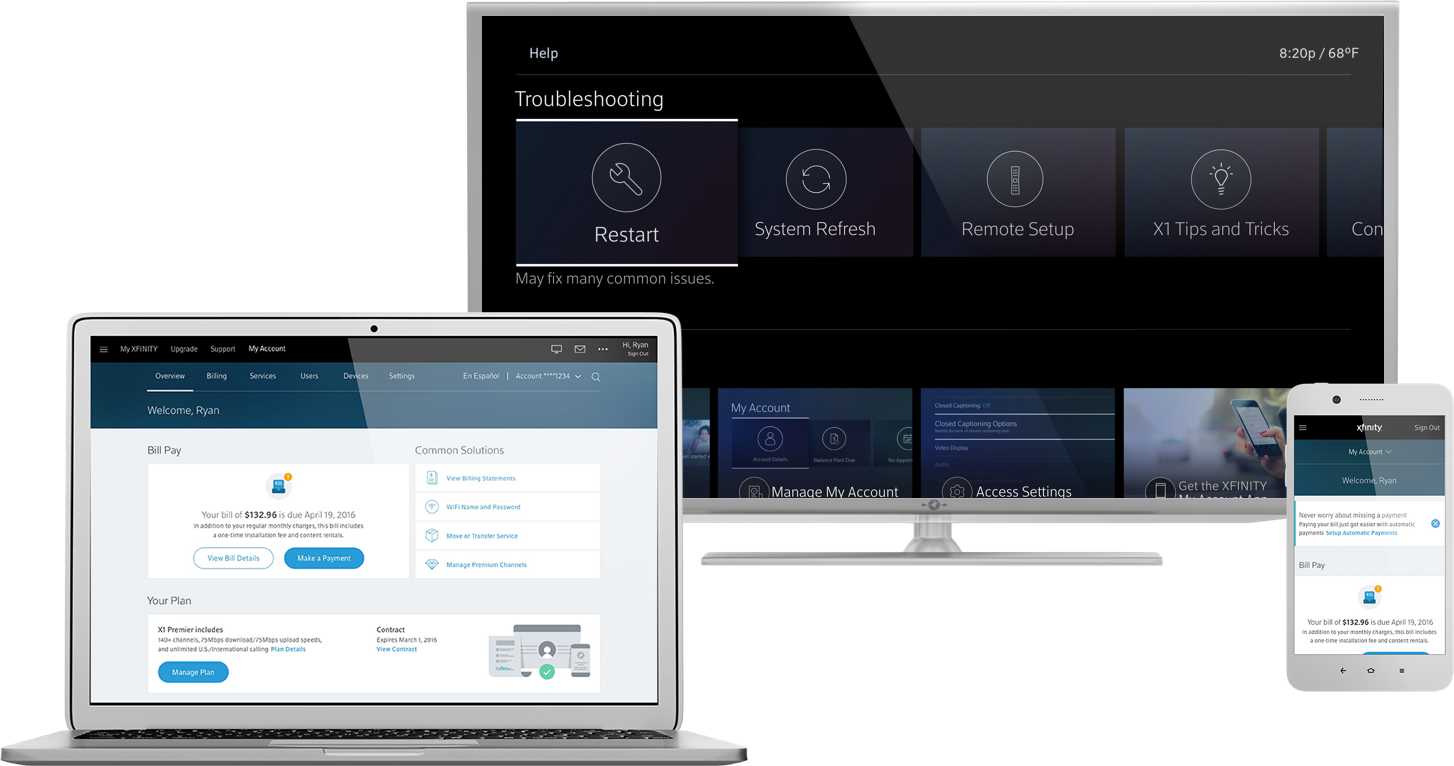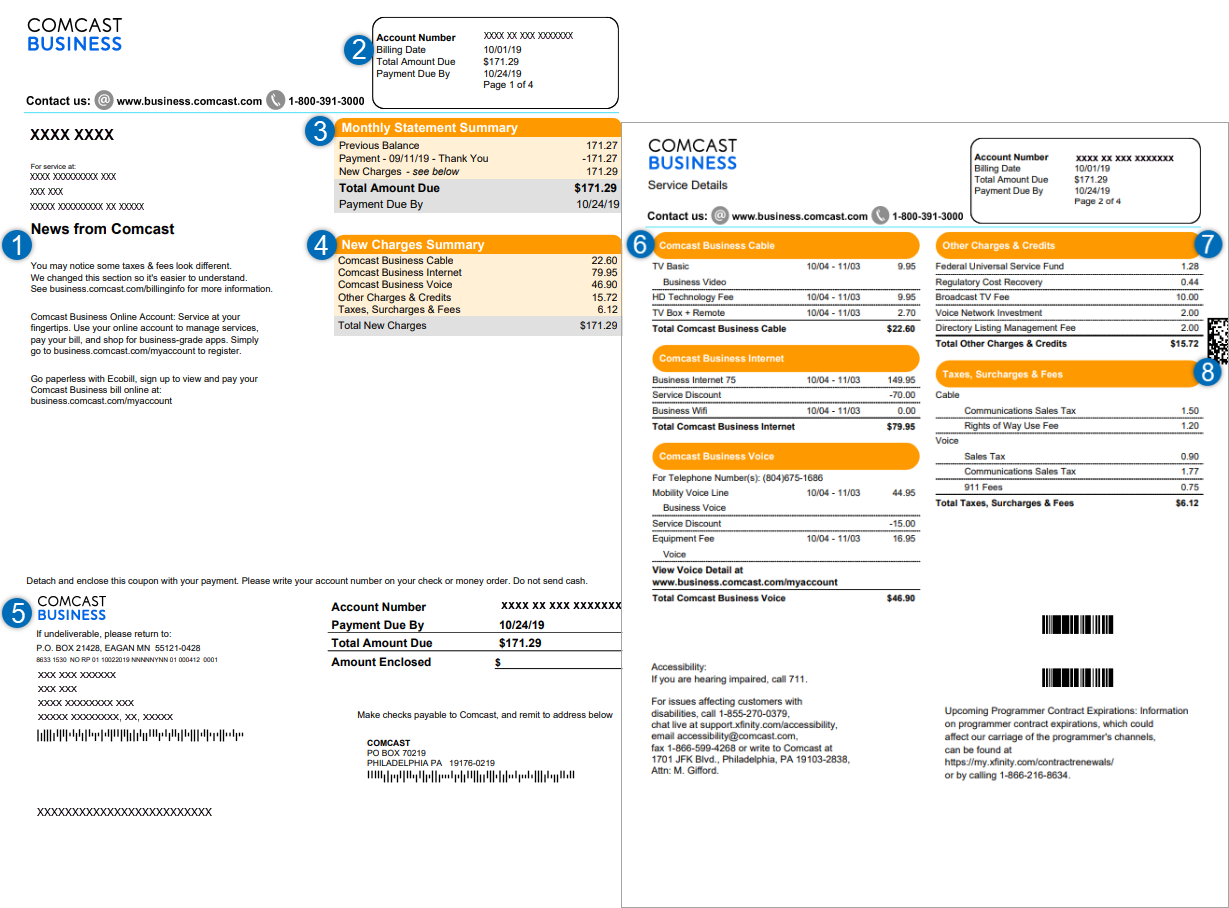
As with any other sales tax, the business making the transaction is responsible for sending the money on through to the state. All cable subscribers in this particular state pay the same flat monthly fee, set by the state. This fee is imposed and set by the state where this subscriber lives. Rates may also vary based on county or municipality. Googling “ communications tax” should be the fastest way to find the pay-TV service tax rates in your state. The state where this subscriber lives imposes communications sales tax on cable and satellite television service, as well as on all landline voice services. Not pictured: Any late fees, previous months’ excess payments, credits back to the consumer for returned equipment, installation fees, and the like would appear in this section. This, just like #8, is one of the ways in which Comcast passes through the cost of complying with the law to consumers, without hurting the profit they take in through the “regular” parts of your bill. This is a fee that Comcast voluntarily assesses on consumers to “help defray the costs of complying with state regulations,” such as TTY phone service or contributions to state universal service funds. In spite of what the name implies, this fee is not required by any state or federal law. This is Comcast’s pass-through line-item for recovering its USF contributions.

The Universal Service Fund is paid into by telecom operators, who are permitted - but not obligated –to recoup that cost from consumers. The FCC’s Universal Service Fund pays for programs like Lifeline that expand phone and Internet coverage to include more rural and/or low-income Americans who would otherwise be unserved. If your channel package includes any sports channels (which all but the most minimal do), you pay this fee. This is their way of recouping that money - whether or not you’ve ever watched a single one of those channels in your life.

#Xfinity pay bill pro
Pro sports broadcast contracts cost money.
#Xfinity pay bill tv
So it’s a sneaky way to make that money.Īgain, this might sound like some sort of required regulatory charge, but this fee, just like the “Broadcast TV Fee,” is a way to raise rates while pretending not to raise rates.Ĭomcast (NBCUniversal) owns and operates several regional sports networks in the areas it serves. Except, of course, that’s what you’re paying for when you pay for cable TV anyway. Nominally, the fee is to recoup costs associated with networks’ carriage contracts. It is a $5 increase on whatever TV or bundle price the consumer is paying.Ĭomcast began adding this fee - initially only $1.50 - to consumers’ bills late in 2013. This might sound like some sort of mandatory fee put on your bill by a state or federal regulator, but in fact, it is just a way for Comcast to raise prices while pretending not to raise prices. Not pictured: Any specific voice fees incurred, like collect calling or international calls, would appear here. In some states, this is taxable (see #13 below). If they use their own modem, there should be no charge here (though we’ve heard countless stories of Comcast customers being charged for phantom modems). If a Comcast customer rents their modem from the company, this is where you’d see that amount. (The bundle provides for up to 75 Mbps this customer reports regular speeds of about 150 Mbps.)Ī paid speed increase would also appear here it would just have a fee higher than $0.

#Xfinity pay bill for free
This particular subscriber called Comcast in 2015 to negotiate a better rate and got their Internet speed increased for free as part of that agreement. #4: Speed increase: Blast! Internet Promotional Rate Not pictured: Additional television services, like premium cable channels, which this subscriber does not get.
#Xfinity pay bill full
The adapter fee is lower than the fee for a full box.

Instead of having a set-top box and DVR attached to it, they just have a digital adapter that descrambles the signals so that the TV actually works. This subscriber has a second television in their home. When the FCC says that consumers are paying $20 billion a year in box rental fees, this is the kind of fee they mean. In this subscriber’s case, it is Comcast’s widely-touted X1, cloud-based, app-running box. This is the fee Comcast charges for your set-top box DVR. This is, in short, the price you expect to pay, and the one you sign up for. The price for new customers is also $10 less per month than this eight-year subscriber pays.


 0 kommentar(er)
0 kommentar(er)
